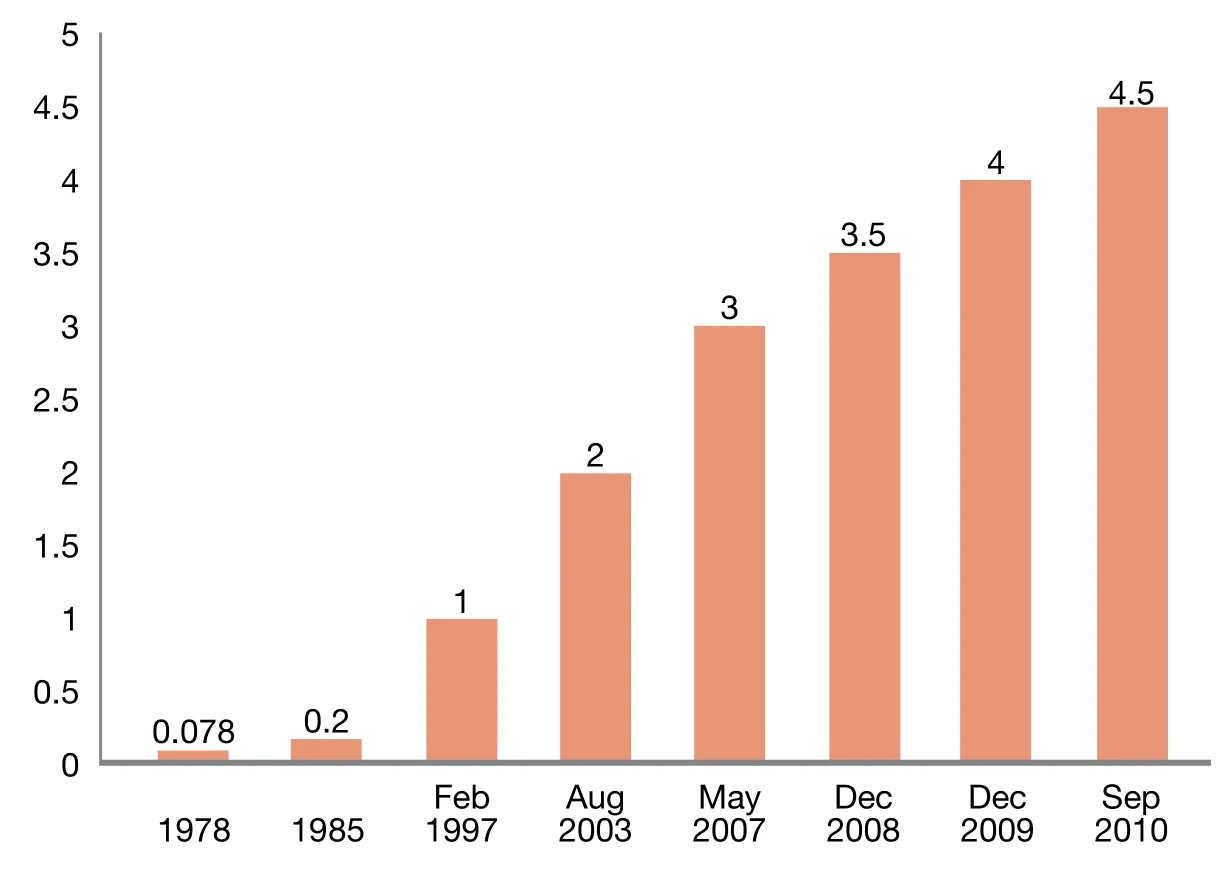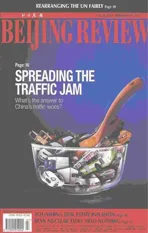More Cars, More Burden
2011-10-14ByYUANYUAN
By YUAN YUAN
More Cars, More Burden
By YUAN YUAN
The increasing number of cars has brought many problems to China
The news of China now being the world’s largest auto market may be good for the country’s automobile industries, but more people say it’s not good for roads and the environment.
Last year China produced more than 18 million cars and sold almost all of them.
While as the whole, China in 2009 overtook the United States as the world’s largest auto market, several years earlier than analysts predicted. It is hard to believe that there were only 2 million units sold 10 years ago,marking an average growth rate of 24 percent.By the end of September 2010, the number of registered vehicles in China had reached 70 million, just lower than the fi gures in Japan and the United States.
Car sales in Beijing increased 27 percent in 2010, bringing the total number of registered vehicles to 4.8 million at the end of the year. This caused the Beijing Municipal Government to limit 2011 issuance of new car license plates to 240,000 and implement harsh traf fi c control measures to ease traf fi c congestion.
“We can expect a 10-percent increase in China’s automobile market in spite of the measures in some cities to curb car sales,”said Lang Xuehong, chief auto industry analyst at Sinotrust, a Beijing-based automobile industry consulting firm. “In 2011,the production and sales will both surpass 20 million. This estimate counts in social and economic factors that bolster China’s auto market growth.”
Lang said the last decade was the golden time for China’s auto industry. Production and sales of automobiles increased from 2 million to 18 million with an average annual growth of 24 percent. Fast economic growth and better living conditions caused the boom in the industry.
Meanwhile, although city roads are expanding all the time, they still can’t accommodate the number of cars on them.
According to statistics from the Ministry of Transport, China has built 65,000 km of roads with an average annual growth rate of 5,000 km since 1999. However, the new roads have almost been fi lled by the increasing number of cars.
Traffic jams have been a normal scene in cities, especially in large cities such as Beijing, Shanghai and Guangzhou.
In the first half of 2010, the number of vehicles in Beijing increased by 1,900 each day. “If it keeps going like this, by 2015, there will be 7 million vehicles in Beijing and the average speed on the road will be lower than 15 km/h—a rate slower than the current standard for the heaviest traffic jam,” said Guo Jifu, Director of the Beijing Transportation Research Center.
Parking is another problem. Normally,the number of parking lots should be 1.1 to 1.2 times that of cars. But in Beijing this number is lower than the standard by 30 to 35 percent. Due to the de fi ciency of public parking lots, many cars park along roads, which has made traf fi c even worse.
As well, air pollution has become more severe. Liu Zhiquan, Deputy Director of the Department of Science, Technology and Standards of the Ministry of Environmental Protection, said one fi fth of big cities in China suffer from severe air pollution and auto emissions are the main cause.
Statistics from the National Development and Reform Commission show that in 2000,China only imported 60 million tons of oil,while from January to November in 2010, the number rocketed to 218 million tons.
Guo Haitao, an associate professor at the China University of Petroleum, said the biggest obstacle in reducing the consumption of oil is the increasing number of vehicles.
According to Guo, China consumed 360 million tons of oil in 2008 and 100 million of that was used by 65 million vehicles.
“If the vehicle number increases to 200 million in 2010, they will consume 240 million tons. It will be a heavy burden for both China and the entire world,” said Guo.
The results of China’s fi fth Automobile Production Capacity Survey, conducted in 2010, show in 2015, the national automobile production capacity will exceed 34 million.
“We are at a risk of production capacity surplus,” said Chen Bin, an official from National Development and Reform Commission.
“To put more efforts on developing newenergy cars is a way to solve the problems brought by the vehicles,” said Guo.
According to the plan made by the Chinese Government, by 2020, annual sales of newenergy cars could exceed 10 million.

URBAN DISEASE: The roads of Zhengzhou, capital of central China’s Henan Province, are packed with cars on January 13

Number of Registered Vehicles in Beijing (million units)
